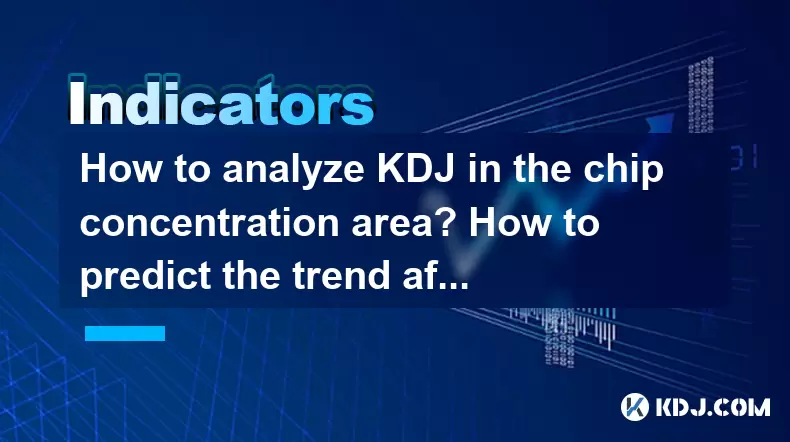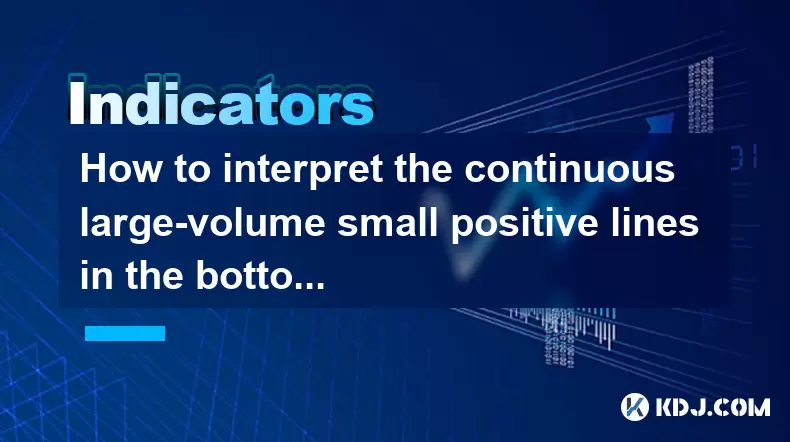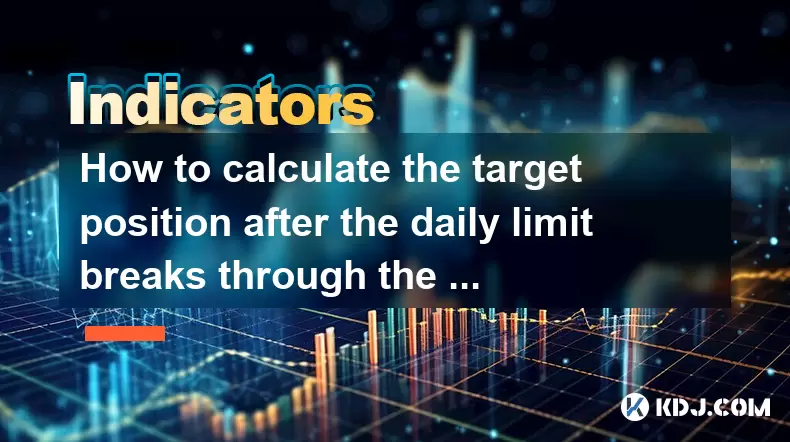-
 Bitcoin
Bitcoin $101,898.5005
-0.75% -
 Ethereum
Ethereum $2,258.1125
-1.07% -
 Tether USDt
Tether USDt $1.0004
0.01% -
 XRP
XRP $2.0178
-2.93% -
 BNB
BNB $624.0243
-1.53% -
 Solana
Solana $134.3298
-0.90% -
 USDC
USDC $0.9999
0.01% -
 TRON
TRON $0.2675
-2.05% -
 Dogecoin
Dogecoin $0.1538
-1.96% -
 Cardano
Cardano $0.5482
-1.11% -
 Hyperliquid
Hyperliquid $35.5636
5.45% -
 Bitcoin Cash
Bitcoin Cash $453.4902
-1.66% -
 Sui
Sui $2.5134
-2.97% -
 UNUS SED LEO
UNUS SED LEO $9.1292
1.77% -
 Chainlink
Chainlink $11.8457
-1.60% -
 Stellar
Stellar $0.2312
-2.73% -
 Avalanche
Avalanche $16.9721
0.29% -
 Toncoin
Toncoin $2.7549
-3.82% -
 Shiba Inu
Shiba Inu $0.0...01081
-1.10% -
 Litecoin
Litecoin $80.8250
-0.71% -
 Hedera
Hedera $0.1374
0.21% -
 Monero
Monero $305.4827
-2.36% -
 Ethena USDe
Ethena USDe $1.0006
0.00% -
 Dai
Dai $1.0000
-0.01% -
 Polkadot
Polkadot $3.2085
-3.12% -
 Bitget Token
Bitget Token $4.0845
-3.13% -
 Uniswap
Uniswap $6.3353
-1.63% -
 Pi
Pi $0.5085
-0.70% -
 Pepe
Pepe $0.0...08913
-3.82% -
 Aave
Aave $232.7090
-0.58%
How to analyze KDJ in the chip concentration area? How to predict the trend after the breakthrough?
The KDJ indicator helps traders identify trend reversals in chip concentration areas, using K, D, and J lines to signal potential buying or selling opportunities in cryptocurrencies.
May 24, 2025 at 04:07 am

Introduction to KDJ Indicator
The KDJ indicator is a popular technical analysis tool used in the cryptocurrency trading community to identify potential trend reversals and buying or selling opportunities. The KDJ, also known as the Stochastic Oscillator, consists of three lines: K, D, and J. The K line represents the fastest line, the D line is a slower moving average of K, and the J line is a more sensitive indicator derived from the difference between K and D. When analyzing KDJ in the context of chip concentration areas, traders can gain insights into market sentiment and potential price movements.
Understanding Chip Concentration Areas
Chip concentration areas refer to price levels where a significant number of cryptocurrencies were bought or sold, leading to a concentration of "chips" or trading positions. These areas are critical because they often act as support or resistance levels, influencing future price movements. When the price approaches these areas, traders should pay close attention to the KDJ indicator to understand the potential impact on the trend.
Analyzing KDJ in Chip Concentration Areas
When the price of a cryptocurrency enters a chip concentration area, the KDJ indicator can provide valuable signals about the market's direction. Here’s how to analyze KDJ in these areas:
Monitor the KDJ Lines: Pay attention to the positions of the K, D, and J lines relative to each other and the overbought/oversold levels (typically 80 and 20). When the K line crosses above the D line in a chip concentration area, it can signal a bullish trend, especially if the J line is also rising. Conversely, a bearish signal is indicated when the K line crosses below the D line, and the J line is falling.
Observe the Overbought/Oversold Levels: If the KDJ lines enter the overbought region (above 80) within a chip concentration area, it may suggest that the price is due for a correction. Similarly, if the lines enter the oversold region (below 20), it could indicate an upcoming bullish reversal.
Divergence Analysis: Look for divergences between the KDJ indicator and the price action. If the price is making new highs or lows while the KDJ lines are moving in the opposite direction, it can be a strong signal of an impending reversal.
Predicting Trends After Breakthroughs
Once a cryptocurrency price breaks through a chip concentration area, the KDJ indicator can help predict the subsequent trend. Here's how to approach this:
Confirm the Breakthrough: First, ensure that the price has genuinely broken through the chip concentration area. A valid breakthrough typically involves closing above or below the area with significant volume.
Analyze the KDJ Signal: After confirming the breakthrough, examine the KDJ lines for signals. If the K line crosses above the D line following the breakthrough, it suggests a continuation of the bullish trend. If the K line crosses below the D line, it indicates a bearish continuation.
Watch for Retests: Often, after breaking through a chip concentration area, the price may retest the area before continuing its trend. During these retests, the KDJ can provide additional confirmation. A bullish retest should see the KDJ lines staying above the oversold level and showing bullish signals. A bearish retest should see the lines staying below the overbought level and showing bearish signals.
Using KDJ in Conjunction with Other Indicators
While the KDJ indicator is powerful, it is often more effective when used in conjunction with other technical analysis tools. Here are some additional indicators that can enhance your analysis:
Moving Averages: Use moving averages to confirm trends identified by the KDJ. For example, if the KDJ indicates a bullish trend and the price is above a key moving average, it adds confidence to the bullish signal.
Volume Indicators: High volume during a breakthrough or retest of a chip concentration area can validate the KDJ signals. Low volume, on the other hand, might suggest a false breakout.
RSI (Relative Strength Index): The RSI can help confirm overbought or oversold conditions suggested by the KDJ. If both indicators are in agreement, the signal is stronger.
Practical Example of KDJ Analysis in Chip Concentration Areas
Let's walk through a practical example to illustrate how to apply the KDJ indicator in analyzing chip concentration areas and predicting trends after breakthroughs.
Identify the Chip Concentration Area: Suppose Bitcoin (BTC) has a significant chip concentration area at $30,000. This level has seen substantial buying and selling in the past.
Monitor KDJ as Price Approaches: As BTC approaches $30,000, observe the KDJ lines. If the K line is below the D line and both are below 20 (oversold), it suggests potential for a bullish reversal.
Watch for Breakthroughs: If BTC breaks above $30,000 with strong volume, confirm the breakthrough. If the K line crosses above the D line after this breakthrough, it signals a bullish continuation.
Analyze Retests: If BTC retests $30,000 after the breakthrough, ensure that the KDJ lines remain above 20 and show bullish signals during the retest, confirming the bullish trend.
Combine with Other Indicators: Use moving averages and RSI to confirm the bullish signals from the KDJ. If BTC is trading above its 50-day moving average and the RSI is above 50, it strengthens the bullish case.
FAQs
Q1: How often should I check the KDJ indicator when trading in chip concentration areas?
A1: It is recommended to check the KDJ indicator frequently, especially as the price approaches and moves through chip concentration areas. Monitoring the KDJ on shorter timeframes (e.g., 1-hour or 4-hour charts) can provide timely signals, while longer timeframes (e.g., daily charts) can confirm broader trends.
Q2: Can the KDJ indicator be used effectively on all cryptocurrencies, or are there specific types it works best with?
A2: The KDJ indicator can be applied to any cryptocurrency, but it tends to work best with highly liquid assets that have significant trading volumes. Cryptocurrencies like Bitcoin and Ethereum, which have large market caps and high liquidity, often provide more reliable KDJ signals compared to less liquid altcoins.
Q3: Are there any common pitfalls to avoid when using the KDJ indicator in chip concentration areas?
A3: One common pitfall is over-reliance on the KDJ without considering other indicators or market conditions. False signals can occur, especially in volatile markets. It's crucial to use the KDJ in conjunction with other tools and to consider the broader market context to avoid being misled by short-term fluctuations.
Q4: How can I improve my accuracy when predicting trends after breakthroughs using the KDJ indicator?
A4: To improve accuracy, focus on confirming breakthroughs with volume and other indicators like moving averages and RSI. Additionally, practice patience and wait for clear signals rather than acting on every minor fluctuation. Historical backtesting and continuous learning from past trades can also enhance your predictive skills.
Disclaimer:info@kdj.com
The information provided is not trading advice. kdj.com does not assume any responsibility for any investments made based on the information provided in this article. Cryptocurrencies are highly volatile and it is highly recommended that you invest with caution after thorough research!
If you believe that the content used on this website infringes your copyright, please contact us immediately (info@kdj.com) and we will delete it promptly.
- XRP Rally Meets Neo Pepe Presale: A Meme Coin Revolution?
- 2025-06-23 17:05:13
- Coin-Op Comeback: Arcade Bars, Stern, and a Director's New Venture
- 2025-06-23 16:45:12
- XRP in Japan: From Community Day Tacos to Payment Sector Transformation
- 2025-06-23 17:05:13
- LILPEPE Presale Frenzy: The Meme Coin Revolution is Here, Ya'll!
- 2025-06-23 16:45:12
- Bitcoin Crash Incoming? Kiyosaki Bets Big on Silver Amidst Global Uncertainty
- 2025-06-23 17:25:11
- Dogecoin, Meme Coins, Price Prediction: Riding the Bullish Wave?
- 2025-06-23 17:25:11
Related knowledge

Is the high opening and low closing and huge volume the next day a trap for more?
Jun 23,2025 at 05:07pm
Understanding High Opening and Low Closing with Huge VolumeWhen traders observe a high opening followed by a low closing and massive volume the next day, it often raises concerns about whether this is a trap set by larger players in the market. This pattern typically indicates strong volatility within a short period, which can confuse retail investors. ...

How to interpret the MACD's second golden cross on the water but insufficient volume?
Jun 23,2025 at 05:01pm
Understanding the MACD Indicator and Its SignificanceThe Moving Average Convergence Divergence (MACD) is a widely used technical analysis tool in cryptocurrency trading. It helps traders identify potential buy or sell signals by showing the relationship between two moving averages of an asset’s price. The MACD line, signal line, and histogram are the th...

How much volume is required for the W-bottom to break through the neckline of the time-sharing chart?
Jun 23,2025 at 04:21pm
Understanding the W-Bottom Pattern in Cryptocurrency TradingThe W-bottom pattern is a popular technical analysis formation used by traders to identify potential bullish reversals. It typically appears at the end of a downtrend and resembles the letter 'W' on price charts. In the context of cryptocurrency trading, where volatility is high and trends shif...

How to interpret the continuous large-volume small positive lines in the bottom area?
Jun 23,2025 at 04:43pm
Understanding the Basics of 'Large-Volume Small Positive Lines'In technical analysis, especially within the cryptocurrency market, the pattern known as 'large-volume small positive lines' refers to a scenario where the price increases slightly (small positive candlestick) but is accompanied by unusually high trading volume. This phenomenon typically occ...

How to read the sideways consolidation after the bottom volume and long positive line?
Jun 23,2025 at 02:28pm
Understanding the Sideways ConsolidationWhen analyzing cryptocurrency charts, sidewards consolidation refers to a phase where prices move within a narrow range without a clear upward or downward trend. This pattern often appears after significant price movements, such as a sharp increase followed by a period of equilibrium between buyers and sellers. In...

How to calculate the target position after the daily limit breaks through the previous high?
Jun 23,2025 at 02:57pm
Understanding the Daily Limit BreakthroughIn cryptocurrency trading, a daily limit typically refers to the maximum price movement allowed within a single trading day on certain exchanges. When this limit is breached, especially when it surpasses the previous high, traders often seek to calculate the target position or expected price movement following s...

Is the high opening and low closing and huge volume the next day a trap for more?
Jun 23,2025 at 05:07pm
Understanding High Opening and Low Closing with Huge VolumeWhen traders observe a high opening followed by a low closing and massive volume the next day, it often raises concerns about whether this is a trap set by larger players in the market. This pattern typically indicates strong volatility within a short period, which can confuse retail investors. ...

How to interpret the MACD's second golden cross on the water but insufficient volume?
Jun 23,2025 at 05:01pm
Understanding the MACD Indicator and Its SignificanceThe Moving Average Convergence Divergence (MACD) is a widely used technical analysis tool in cryptocurrency trading. It helps traders identify potential buy or sell signals by showing the relationship between two moving averages of an asset’s price. The MACD line, signal line, and histogram are the th...

How much volume is required for the W-bottom to break through the neckline of the time-sharing chart?
Jun 23,2025 at 04:21pm
Understanding the W-Bottom Pattern in Cryptocurrency TradingThe W-bottom pattern is a popular technical analysis formation used by traders to identify potential bullish reversals. It typically appears at the end of a downtrend and resembles the letter 'W' on price charts. In the context of cryptocurrency trading, where volatility is high and trends shif...

How to interpret the continuous large-volume small positive lines in the bottom area?
Jun 23,2025 at 04:43pm
Understanding the Basics of 'Large-Volume Small Positive Lines'In technical analysis, especially within the cryptocurrency market, the pattern known as 'large-volume small positive lines' refers to a scenario where the price increases slightly (small positive candlestick) but is accompanied by unusually high trading volume. This phenomenon typically occ...

How to read the sideways consolidation after the bottom volume and long positive line?
Jun 23,2025 at 02:28pm
Understanding the Sideways ConsolidationWhen analyzing cryptocurrency charts, sidewards consolidation refers to a phase where prices move within a narrow range without a clear upward or downward trend. This pattern often appears after significant price movements, such as a sharp increase followed by a period of equilibrium between buyers and sellers. In...

How to calculate the target position after the daily limit breaks through the previous high?
Jun 23,2025 at 02:57pm
Understanding the Daily Limit BreakthroughIn cryptocurrency trading, a daily limit typically refers to the maximum price movement allowed within a single trading day on certain exchanges. When this limit is breached, especially when it surpasses the previous high, traders often seek to calculate the target position or expected price movement following s...
See all articles
























































































